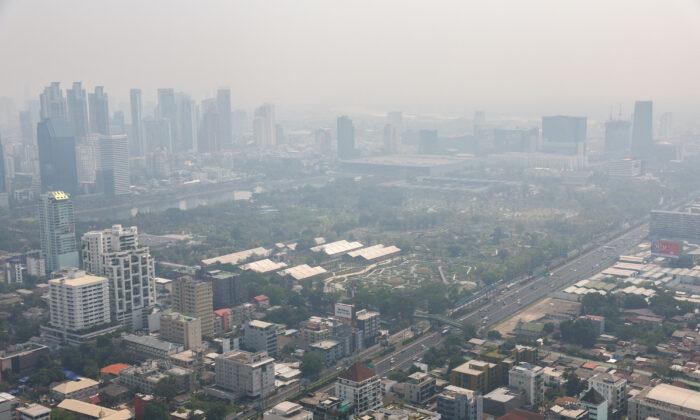Nearly 200,000 people in Thailand were admitted to hospitals with pollution-related respiratory illness last week as heavy smog covered vast areas of the country, the Health Ministry stated on March 10.
“The PM2.5 level has been over 51 micrograms per cubic meter of air for more than three consecutive days in 15 provinces, which has begun to affect the people’s health,” Public Health Secretary Opart Karnkawinpong said.
Thailand’s air pollution levels are higher this year due to increased traffic, he said.
PM2.5 refers to fine particulate matter with a diameter of 2.5 micrometers or less, which can get into the lungs and pose significant health risks, including respiratory and cardiovascular diseases and cancer.
Greenpeace Thailand campaigner Alliya Moun-Ob said the number of people who fell ill because of air pollution could be “the worst we have seen so far,” with several Thai cities being engulfed in thick smog.
“We could see mountains in Chiang Mai but can’t see them anymore. In Bangkok, tall buildings are lost in the smog,” Moun-Ob told Radio Free Asia.
“It’s the post-COVID back-to-normal situation. That is why it is particularly bad this year for Thailand. Also, there is less rain this year compared to last.”
No-Burning Rule
Thai Prime Minister Prayuth Chan-o-cha last month imposed a three-month no-burning rule from Feb. 1 to April 30 to curb wildfires and haze. He has now urged farmers to refrain from burning agricultural waste.“Please, I don’t want to use the laws. If it’s used, you all will be breaking it. I don’t want anyone to be in trouble, but you must think about the quality of life of others and their health too,” he said.
“Thailand as a country can be counted as a place that has numerous polluted cities, some of which are famous for their levels of smoke and haze,” IQAir stated, citing Bangkok and Chiang Mai as some of Thailand’s polluted cities.





